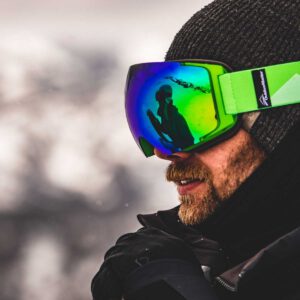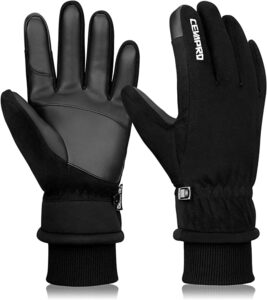How to Ski in a Whiteout (or: "You can't ski when you can't see")
There's a very simple answer to the question "How do you ski in a whiteout?" and that is "carefully".
When visibility drops then you are going to have to rely on instinct and fast reactions, so maybe giving those not-quite-fast-enough reactions a little bit of extra time to kick in is going to be in your best interests.
You could argue that you should never be up a mountain when visibility is that bad in the first place, but it's often the case that the weather can turn very quickly and what was moments before a slightly cloudy morning can transform into something that looks like the Construct from the Matrix with unending undefined whiteness all around.
So can you ski when you cannot see? Here are a few tips that might be able to help you.
1. Ski slower
If you're in a whiteout, then today might not be the day to try and break that speed record or to show off your swish carving down a red run.
Unless you have zero sense of fear, skiing slower should come very naturally to conditions resulting in seriously diminished visibility. You want to give yourself enough time to turn if you need to suddenly, to react to unexpected icy patches or snow drifts, and to stop quickly if you find yourself much closer to the edge of the piste than you imagined.
2. Switch goggles
If it's an option for you, switch to a pair of goggles with less tint to them. A lot of skiers take a spare pair of goggles up the mountain with them, or if you want to be really clever, a pair of skiing goggles with detachable lenses makes for a much easier switch (and less kit to lug up the mountain in the first place). I've rave about these goggles every chance I get.
I've been caught out on the mountain in a whiteout with just a pair of sunglasses before and it certainly makes an already challenging experience even tougher.
3. Ski (relatively) close to the edges
One of the most terrifying things that happens in a whiteout is that you can no longer see the piste markers. A simple solution to this is to stay near to where they should be so you can see them emerging from the fog quicker.
You obviously don't want to be hugging the edge of the piste, just in case there is a sharp turn coming up that you can't see, but keeping to the edges will give you a bit more advance warning than trying to pick your way down the middle.
4. Stick to slopes you've already been down
This isn't always possible, but it is infinitely easier to ski down runs that you've already been down in better conditions. Having a vague idea of what's coming up will help you anticipate potential issues and just make you feel a bit happier about the experience overall.
Obviously this isn't possible if you're on your first day, but otherwise this can definitely take the edge off the experience.
5. Ski through your feet
When you can't see with your eyes, you have to start looking with your feet. A whiteout can make you much more sensitive to how the piste feels through your feet and you can rely on this to react appropriately to ice or powder.
Trust in your reactions and support your reaction time by keeping a slow pace and you'll find yourself at the bottom of the run in no time.
6. Stay calm and take it one turn at a time
One of the main challenges in a whiteout is overcoming the panic that sets in when you acknowledge that you're halfway up a mountain and could be stuck there. Just remember that it's unlikely that the resort would have let you get there if it was really really dangerous, that there are other people around you (somewhere), that you can get down again and that there is no rush to do so.
Take the slope one turn at a time, react to unexpected gradient changes and ice, keep an eye on where the edge of the piste is and you'll be back at the bottom again before you know it.
7. Don't be afraid to call it a day
There's no shame in calling a day of skiing off early if the conditions don't improve or if it's far too scary. It is after all much better to be sat in a cafe with a hot chocolate and a book than it is to be stuck somewhere waiting for ski patrol to find you if it gets that bad.
One of the biggest dangers of a whiteout after all is getting to the bottom where it's a bit clearer and deciding "well that wasn't that bad really I suppose - let's get back on the lift!"

